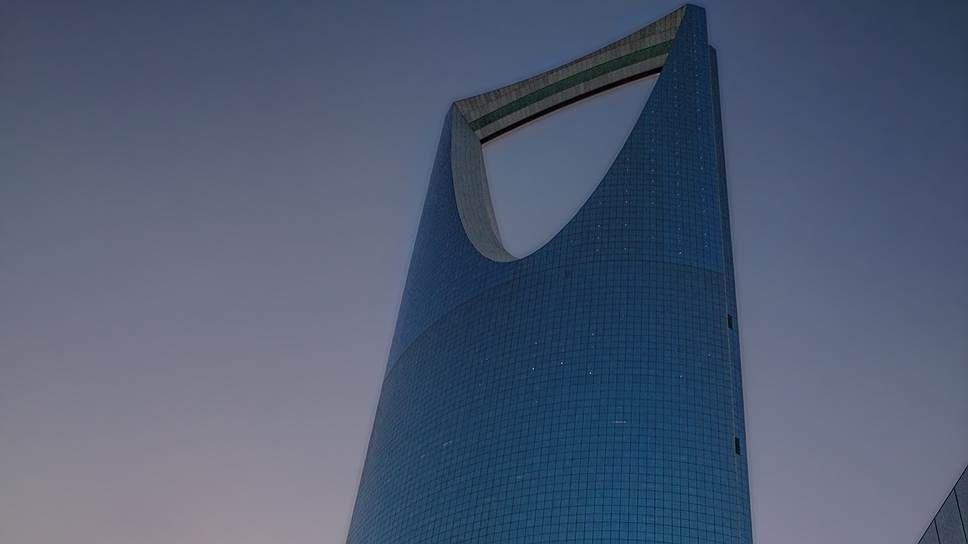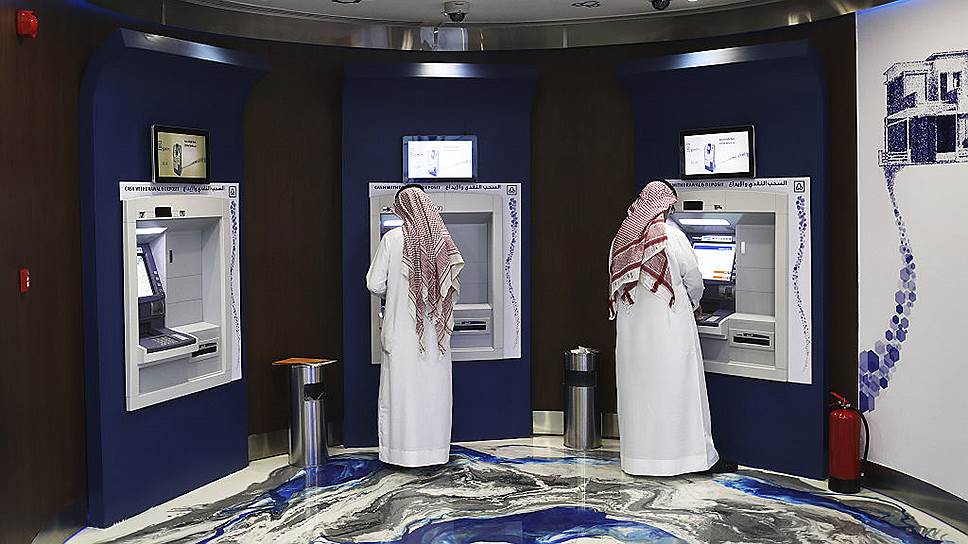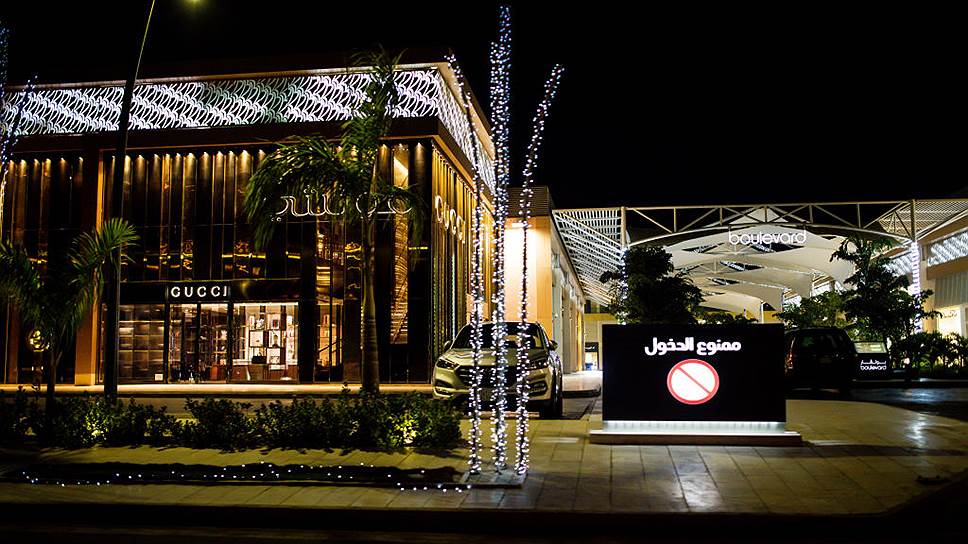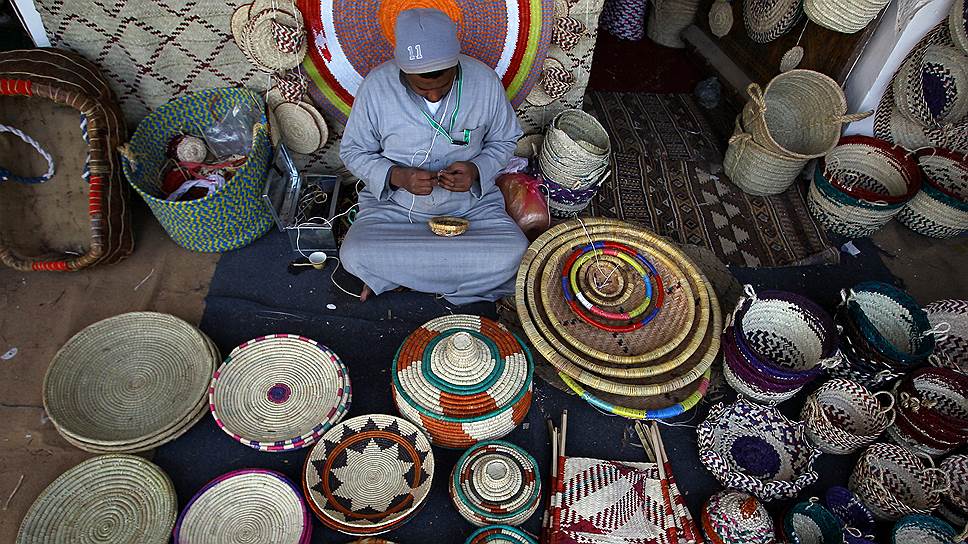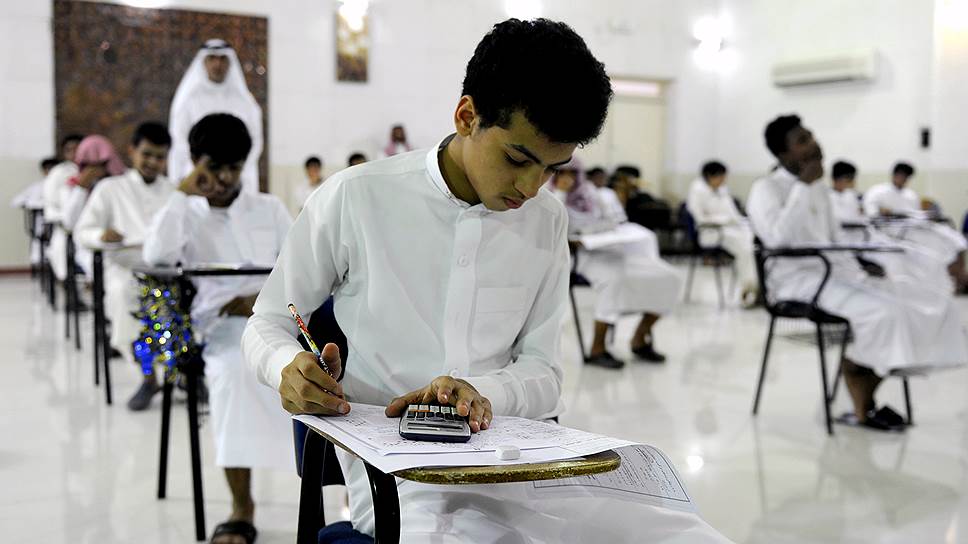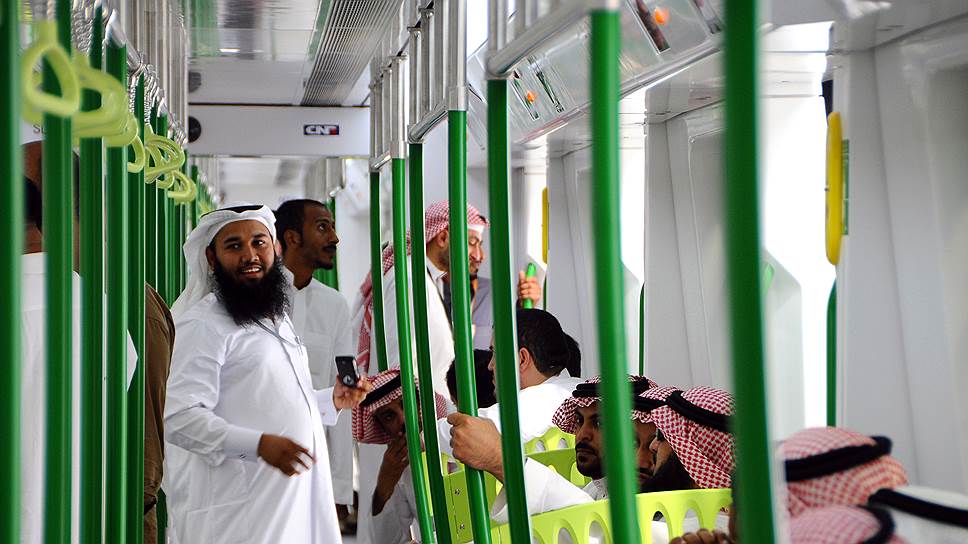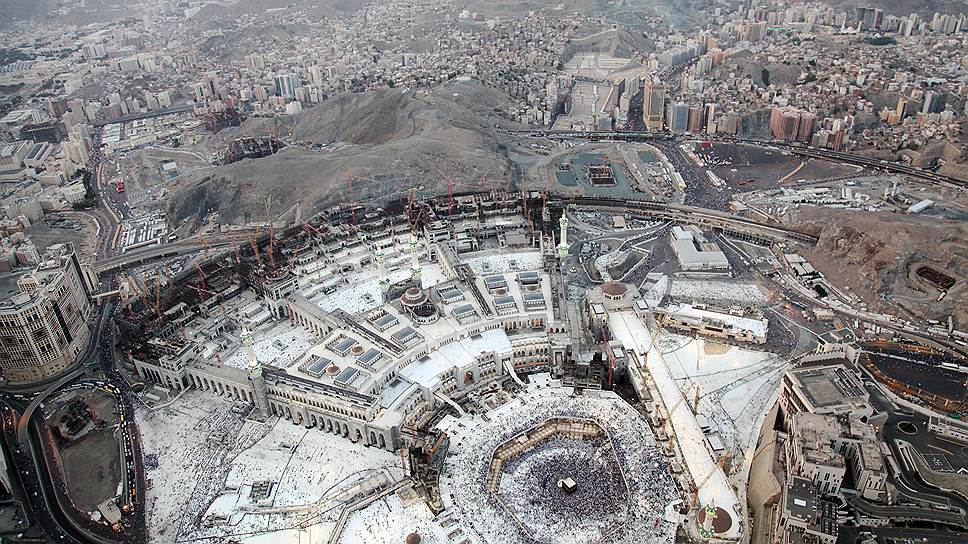A Kingdom with a Mission
International stereotypes about Saudi Arabia, similar to those about Russia, often have little to do with reality.The Business Guide offers its readers a look at the Kingdom of Saudi Arabia from a different perspective. It is one of the largest economies in the world; a country with modern metropolises; a world-record holder for investment in education; a state with a social profile similar to that of the developed European countries; a society that for many centuries has been creating its own version of multiculturalism; a culture inherently supportive of the free market; one of the few communities where you always know where to look for answers to your questions.
Million-plus cities instead of millionaires
Countries with cultures that favor self-sufficiency are not too common - and they do not like to talk about themselves. Such countries have little interest disputing persistent myths about themselves, in the world where a lot depends on self-promotion.
The first thing that bewilders any person first coming into contact with the Gulf countries (and KSA in this case is an excellent example) is their social geography. KSA is the thirteenth state in the world by size, with population of more than 33 million in 2017. It is included in the top 50 largest countries of the world, and will continue occupying a leading position. Its population is relatively young, with an average age of 26.4 years, despite the high average life expectancy of about 75 years (77 and 72 years for women and men, respectively). Such demographic indicators are common for smaller countries with large rural populations, while KSA is known for its high level of urbanization. It is unusual - for a country with mountain ridges of more than 3,000 meters high, vast coastal valleys and the great deserts - to have 82% of its population concentrated in urban metropolitan areas and ultramodern mega-cities.
Officially, it has four of these mega-cities: the capital of Riyadh (5 million plus), Jeddah (4 million), Mecca (1.5 million), Medina (1 million), and Dammam (almost 1 million). In reality, however, it is more complicated than that - we are talking about several multi-million urban clusters that appeared as a result of the unprecedented demographic growth in KSA: the population of the Kingdom has grown more than four-fold from 7 million back in 1970. At the same time, the birth rate of 2.1 children per family in KSA is not comparable to either that of "old" Europe or the developing countries. The growth is partly driven by migration from other countries: KSA is one of the most attractive destinations in the region.
Contrary to stereotypes, Saudi Arabia is a country with a moderate level of social stratification. According to the Gini ratio (0.34), the country is comparable to Italy, Australia, and Canada; in Turkey, the USA, Russia, China, and Iran the segregation is higher. In short, the demographic situation in KSA is unlike any other in the world given its relatively young and fast-growing population. What is even more unusual is the high level of its education: KSA spends about $45 billion a year on education, a large part of which consists of international education costs for some 150,000 Saudi students. In KSA there are about 0,5 million school teachers in a total of 36 thousand schools, 40 universities (of them, more than 10 are privately-owned) with more than 0.7 million graduates each year. Saudi Arabia is a well-educated society by any standards, and such spending on education has been an integral part of the Kingdom's political and social culture in the recent years. No one saves money on education here, and almost anyone who wants to go to university has an opportunity to do so.
And this is being actively used.
A country with solid base
All these circumstances do not prevent KSA, a country full of young people living in multi-million cities, to be a very conservative society and a closed one by global standards, or, at the very least - a very traditional one. It is not about "patriarchal society" in Saudi Arabia; it is about the revolution of "conservative". KSA is a state in which modernist ideas were used to form a society with extremely conservative foundations. In Saudi Arabia, Islam quite literally forms the foundations of the society's social and political structure. Sharia Law is the base of the legal system in KSA, and the organization of the state is dictated by the Quran and the provisions of Islamic law. The absolute power in KSA belongs to the King from the dynasty of Saudi - the founders of the kingdom - currently it is the King Salman bin Abdulaziz Al Saud.
However, the definition of an "absolute theocratic monarchy", used for the European Christian states in the XVI-XVIII centuries, is not inappropriate for KSA. This is because the Sharia legal system provides for a "balancing" element, represented by the court and a developed system of legal interpretation. Sharia experts are independent and are guided not only by the Sharia law rules (which can also take into consideration the norms of "external" legal systems - for example, in the commercial law - as long as they do not contradict the Sharia), but also by public opinion. To understand the peculiarities of this system, one needs to take into account long-standing traditions of local self-regulation, which in the recent years has been democratized (as is normal for the urban environment), as well as recognition by the Islamic law of the general rules of laissez faire - state non-interference in business affairs. In this regard the Islamic legal system is extremely supportive of entrepreneurship - the Prophet Muhammad was, among other things, a merchant, and so even culturally the rejection of entrepreneurship is simply impossible in KSA.
Despite this, more than two decades ago the economy of KSA, one of the world's top 20, was largely state-owned. And by far the largest share of that was the oil industry. Saudi Arabia is the world's second largest producer of oil, and it usually beats Russia (the countries swap the leading positions several times a year) in the race for the status of the world's largest oil exporter.
In recent years, KSA has made easy decisions on privatization. One example is Saudi ARAMCO, which, bringing the lion's share of revenues to the Saudi budget with turnover of more than $300 billion a year, plans an IPO this autumn. And it has a chance to surpass the capitalization of Apple, the world's most expensive company. However, between 2003-2013 KSA already had experience of medium-scale privatization. Then the authorities were disbanding the telecommunication and water supply sectors, as well as electricity and partly health and education services, and even the traffic control system.
KSA needs privatization not for the sake of money, but for the sake of reform and realization of the political ideas on which the Kingdom is built. The image of Saudi Arabia as a dictatorship, which has little interest in anything beyond the oil revenues to finance "the Islamic oil socialism", is very far from reality.
Always too much oil
It is undeniable that KSA economy is based on oil. Oil production in Saudi Arabia accounts for approximately 45% of the country's GDP, whilst oil exports now account for about 70% of the country's revenues. The country's geography accounts for this. It is predominantly hot and dry, and rains for only two months a year, with summer temperatures reaching +50 degrees Celsius as a norm. This essentially renders the country dependent on significant volumes of imports of food and consumer goods. KSA can afford a very high level of consumption, although it should not be overestimated. For example, in terms of nominal GDP per capita, KSA is close to South Korea and Spain, although its purchasing power parity is normally closer to the United States.
Any "petro-state" needs to protect itself from fluctuations in oil prices. KSA has been a key player and organizer of OPEC since the first "oil crisis" in 1973, and in this regard Saudi Arabia has always been actively involved in the oil market. During this time, authorities invested a part of the oil revenues outside the country. Unofficial estimates of the "reserve fund" of KSA are about $0.9 trillion (the structure and assets of which are not disclosed). This is a similar value of the European pension fund of the "oil monarchy", the Kingdom of Norway.
However, this strategy does not support or sustain a guaranteed and stable standard of living in KSA. Thus, between 1980-1985 living standards went down. During the current oil price decline, Saudi Arabia needs to enforce budgetary discipline and spend its reserves on investment in the economy.
This is not the first time KSA has implemented a program for developing the private and non-primary sectors of the economy. Since the 70s, KSA has implemented seven "five-year plans". The meaning of these are contrary to those of the Soviet "five-year plans". The foundation of KSA plans were the faster development of the economy's private sector rather than the state. In the last seventh "capitalist five-year plan" of 2000-2004, the private sector in KSA grew at a rate of 5% per year (and the non-resource based - 4% per year) with a total GDP growth of 3.1% per year. Since 2015, the new King has been implementing the Vision 2030 program, which involves the development of the export of value-added, non-resource based products - with exports targeted at $100 billion by 2025. Many sectors of the state economy are engaged in this, notably the construction of large ports, technology clusters and industrial parks. The basis of Vision 2030 is not only the economic development of KSA in the modern world, but also the social development of the country. Saudi Arabia intends to transform itself into an "ambitious nation" within a decade and a half.
What they do and what is being done
As far as the non-resource-based sector of KSA economy is concerned, its two key sectors are predictable. The first one is construction and the real estate market, which is seen to be growing from 5% of GDP to 10%. The real estate market in Saudi Arabia, contrary to its Gulf neighbours like the United Arab Emirates, has never witnessed any substantial "overheating", despite the fast growth of the nation's private, urban construction. It is hoped that the future opening of the Kingdom's real estate market for external investors may remedy this to some extent. The Kingdom's external investment into construction projects have suffered repeated profit loss due to "property development bubbles".
The second sector is the country's processing industry. This primarily relates to the further development of one of the world's most developed petrochemical industries. Both the population and industrial consolidation are quite high in Saudi Arabia, therefore $50 billion is already being invested in three of the world's biggest petrochemical projects - Ras Tannura refinery and processing complex, Jubail petrochemical project and Petro Rabigh complex refinery reconstruction project. KSA is also a major producer of cement, construction materials, nonferrous and ferrous metal products, with many regional industrial projects relying on it.
Processing and export diversification are needed by Saudi Arabia to find a solution for quite a specific problem; despite the overall prosperity and high living standards, the nation's unemployment rate is soaring. It is currently around 12%, with a comparatively low share of an economically active population - about 41%. Currently, about 65% of male and 18% of female Saudis are employed. The share of unemployed men is 6% and unemployed women is 33%. Shariah law is not drastically prejudiced against working women, contrary to the existing misconceptions. The majority of Saudi families are able to provide for women leaving no need for them to work, and the current economic plans suggest an expansion of the economically active population, including its female participants.
The problem of a low employment and high unemployment rate forms a paradoxical combination with what is both a challenge and an advantage: whilst emphasising being an Arab country, KSA is far from being a monocultural society. It is not a closed community, but rather one of the few countries across the globe where external influences are extremely powerful - and KSA political system has intrinsic and sometimes very strict mechanisms not only for limiting such influences but also for encouraging them.
Another multiculturalism
KSA has one the most liberal laws on labour migration across the globe. There are 10 million foreign citizens in KSA, of which 6 million are employed. Most of the people working in KSA come from the Philippines, India, Pakistan, Egypt, Bangladesh, Yemen and Syria. More than 100,000 of KSA's permanent residents are OECD citizens - Europeans, Americans, Canadians, and Japanese. The future generations of KSA population will alter these statistics. The share of Saudis will gradually rise, although the role of foreign citizens in the nation's economy will always be quite important.
This quite unusual combination of factors in the labour market makes the Saudi society and its national culture, and its relation to economics, quite complicated. Thus, KSA companies have a very high level of corporate governance and technology penetration, judging by international standards, while a close-to-parity balance between the local and foreign labour force makes the national corporate traditions unique. However, as US companies' experience in Saudi Arabia shows, these traditions do not contradict international corporate governance standards.
Additionally, considering all the conservativeness and self-sufficiency of the Saudi society, the nation actually has its own version of multiculturalism which differs from the American and European ones. Currently there are 1.2 million Catholic residents in KSA, and there is a rather large Shiite minority. Despite a formal ban on foreign religious practices and interreligious tensions in the recent years globally, KSA does not witness any major conflicts, while the nation's crime rate is low for such a diversified, largely urban population. However, the Arabian Peninsula has been a lively international trade hub for many centuries, and the Arab populations of Riyadh and Jeddah do not regard foreigners as something exotic, which is perfectly reflected in the local culture. Finally, for Saudi citizens, visiting other countries is not an exceptional but rather a routine activity. The Saudi quality of life not only provides many KSA citizens with a high standard of consumption, but also allows them to experience the world on their own. Saudi tourists and business travellers are frequently seen in the world's major cities, and young Saudis have been able to find out what is happening in the world first-hand and not only in theory for several decades now.
However, there are two KSA cities where few foreigners or at least non-Muslims are allowed, and we should not forget the fact that Saudi Arabia is a historical centre of Islam focused on carrying out this important mission. The two centers are Mecca, whose citizens are considered in KSA as the most liberal and open to discussion on most issues, and Medina.
Must-visit cities
Mecca and Medina are two cities with the sacred sites that must be visited at least once in a lifetime by any Muslim who has such an opportunity. This is a requirement under Islam, and all Muslims treat it as a law. Consequently, one billion Muslims from all over the world are drawn to Saudi Arabia . In other circumstances, the Hajj, a compulsory pilgrimage to Mecca and Medina, and Umrah, a devotional visit to the main sacred places of Islam, could be branded as "organic potential for tourism development". However, this is obviously not tourism. KSA considers providing an opportunity for as many of its fellow believers as possible from across the globe to perform their religious duty and make a pilgrimage to the sacred places of Mecca and Medina during the holy month of Ramadan as one of the goals of its own existence and development.
Until the 1970s, the number of pilgrims-Hajjis to KSA was not so high. With air travel expansion (and the growth of the Saudi Arabian Airlines business), the greater ability of KSA authorities to cover some of the pilgrims' expenses, the creation of infrastructure in the Mina valley and the religious compounds in the two Holy Cities, the number of pilgrims has been growing rapidly. As of 2017, the number of Muslims coming for the two-week Hajj was up to two million people, while the number of Umrah pilgrims reached four million. It is expected that by 2030 the total number of people admitted to Umrah will rise threefold: with KSA population totalling 35-40 million, the number of pilgrims will reach 12 million.
KSA government's huge investments in civil infrastructure, including the Mecca underground, underground and hotels in Medina and Riyadh, monorail, safety systems, anti-terror, energy and water supply facilities, have enabled this substantial growth in the number of pilgrims visiting the Two Holy Sites. To a major extent, the Saud dynasty considers this mission as the purpose of their power, and the petroleum resources of Saudi Arabia as a means of achieving it. The cohesion of the Islamic religion with the state's objectives is a unique feature of KSA, often underestimated outside the Kingdom. The duty of the King of Saudi Arabia, bearing the title of Custodian of the Two Holy Mosques, is to preserve and provide access to Mecca and Medina for the Muslims from all over the world. It is this mission, rather than the nation's role in the oil market that determines KSA's position in international politics.
Within the Arab world, this central role of KSA is hardly disputed, and the same is true for the Islamic world. As the home country of Muhammad and Islam, and as a natural global centre of power, Saudi Arabia cannot escape the global political agenda. It is entitled to have a special relationship with the USA, of which KSA is a strong military ally, as well as with China, India, Israel and Russia. KSA maintains a professional army with advanced military technology, which drains a big share of state finances. As for "civil cooperation", Saudi Arabia takes part in the major integration project of the Arab world - the Cooperation Council for the Arab States of the Gulf (GCC). Within the GCC framework, there was even a discussion on a single currency for six Gulf countries. In general, this organisation, which has a similar structure to the EU, APEC, EAEU, NAFTA and MERCOSUR, is well on its way to developing a cultural and economic union. That said, large investments made by KSA in other countries provide the nation with diversified contacts and influence in most unexpected areas of the world. Despite its self-sufficiency, Saudi Arabia is a rather globalized country from all perspectives: by no means is this a country that has locked itself up.
Digitalised Koran society
In fact, it is almost impossible to tell now what Saudi Arabia's version of globalisation will look like in this century. KSA's objective to "turn itself into an ambitious nation" is one of the most complex ideas that have ever been implemented on a national level. The country aims not only to become a "digital society" with a corresponding economy, but also to retain its combination of religious norms, law and culture, which is unusual for the modern world, and to position this mix as a model for Muslims across the globe. It is essentially about the ongoing social and cultural revolution that created the first Saudi state in 1820s, based on the ideas of the Wahhabi religious and social movement, among others, and then the Kingdom of Saudi Arabia in 1932. The global political development of the Muslim idea, one of the major ideas in the contemporary world, will rely largely on the success of KSA transformation projects, both social and economic.
Today it is difficult to imagine how exactly Saudi Arabia will overcome many challenges to fulfil this complex task. The Western version of the "digital world" is harder to implement in Saudi Arabia, for example due to religious restrictions, KSA has an underdeveloped entertainment market, which is considered by OECD countries one of the key sectors of the "future economy". The changing social status of women and minorities (including the religious ones), an evolving approach to electoral bodies and municipal government, questions about human rights, and the religious nature of law, make the preservation of the status quo in Saudi Arabia seem unlikely as it continues along the path to economic modernization.
However, Saudi Arabia is not intent on preserving itself in its current form. No more than it is keen on abandoning the unique cultural and religious heritage that has created it and led it to the place where it is now: a special place on the world map.


